
iuniti siquis ís dâ uôrld a féir plêis
How inequality is affecting nations’ economic growth
NOLAN, B. How inequality is affecting nations’ economic growth. World Economic Forum, 7 agosto2018. Disponível em: https://oeds.link/JGdSYr Acesso em: 18 julho. 2022.
Retirement incomes will become more unequal, study finds
NOVA, A. Retirement incomes will become more unequal, study finds. CNBC. Englewood Cliffs, Nova Jersey, 7 agosto 2018. Disponível em: https://oeds.link/iNTMAH Acesso em: 22 abril 2022.
Inequality has fallen, says IFS, but levels of grinding poverty are unchanged
MOORE, J. Inequality has fallen, says IFS, but levels of grinding poverty are unchanged. The Independent. Kensington, Londres, 19 julho 2017. Disponível em: https://oeds.link/L3bvYginequality-has-fallen-says-ifs-but-levels-of-grinding-poverty-are-unchanged-a7848561.html. Acesso em: 22 abril2022.
Rising economic inequality should worry us
RISING economic inequality should worry us. Bangor Daily News. Bangor, Maine, 11 março2018.
Courts must fight poverty and inequality in society
OMBOGO, G. Courts must fight poverty and inequality in society. The Saturday Standard. Nairóbi, Quênia, 19 agosto 2018.
How rising inequality hurts everyone, even the rich
INGRAHAM, C. How rising inequality hurts everyone, even the rich. The Washington Post. Washington D.C., Estados Unidos da América, 6 fevereiro 2018.
Study: Minorities Labeled Learning Disabled Because of Social Inequalities
LARDIERI, A. Study: minorities labeled learning disabled because of social inequalities. U.S. News. Washington, D.C., Estados Unidos da América, 21 agosto 2018. Disponível em: https://oeds.link/7O3982 Acesso em: 22 abril 2022.
Inequality is under attack – but what should equality really look like?
LITTLER, J. Inequality is under attack – but what should equality really look like? The Guardian. Londres, 4 janeiro 2018.
Economic stagnation and inequality writ large in the school of monopoly capital
ABOOBAKER, A. Economic stagnation and inequality writ large in the school of monopoly capital. Business Day. Joanesburgo, 4 agosto 2018.
Inequality falls as low earners’ wage growth outstrips the rich
WALLACE, T. Inequality falls as low earners’ wage growth outstrips the rich. The Telegraph. Londres, 26 julho 2018.
Headlines about inequality around the world.
Gêneros discursivos: notícia, reportagem e entrevista.
Tema: desigualdade social no mundo.
Os objetivos desta unidade são:
- familiarizar-se com os gêneros discursivos notícia, reportagem e entrevista;
- refletir sobre as fórmas e as consequências da desigualdade social.
taimi tchu finqui
Faça no caderno as questões de resposta escrita.

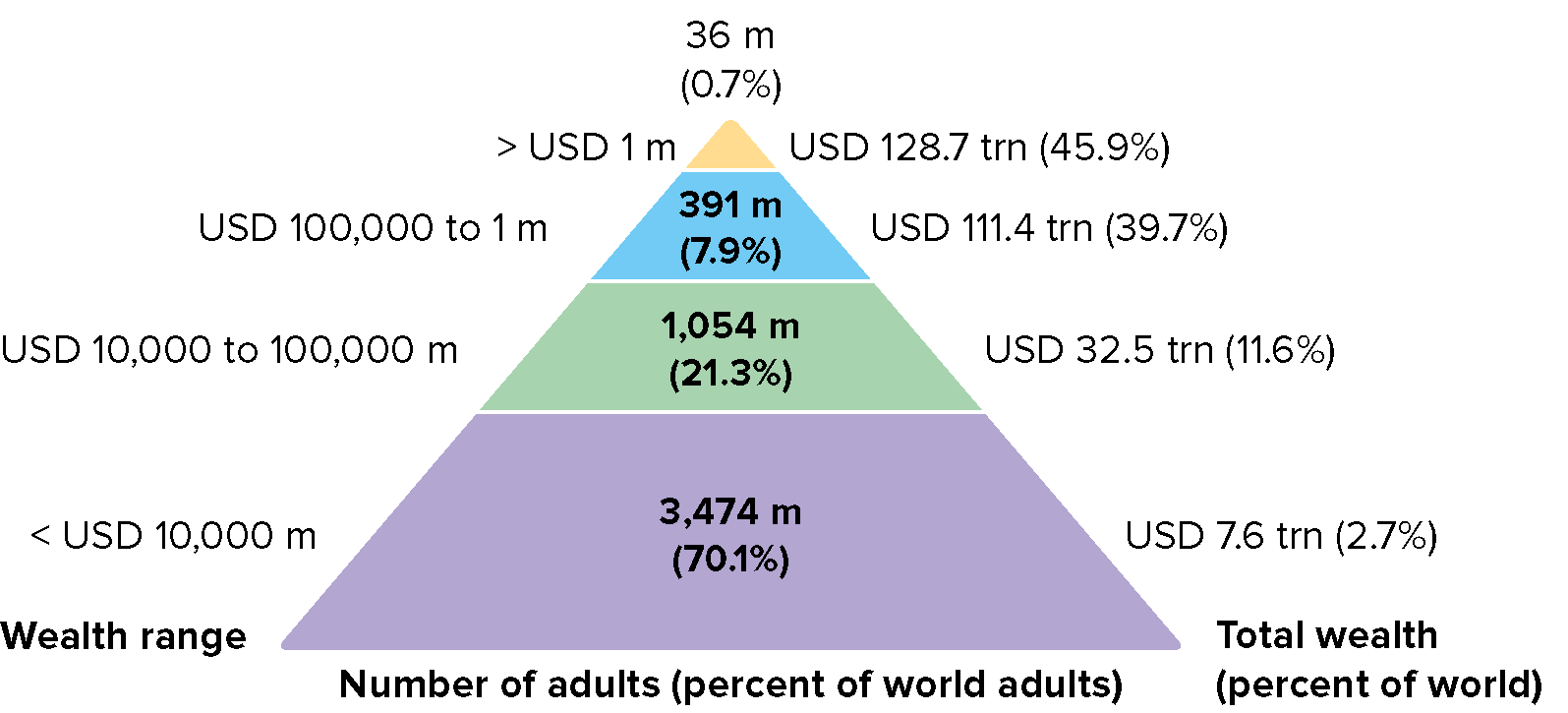
DAVIES, J.; LLUBERAS, R.; SHORROCKS, A. Global Wealth Report 2017. Zurique: Credit Suisse Research Institute, 2017. página 21.
Did you know?
• tê érri êni equivale a trílhân e ême equivale a .
II.
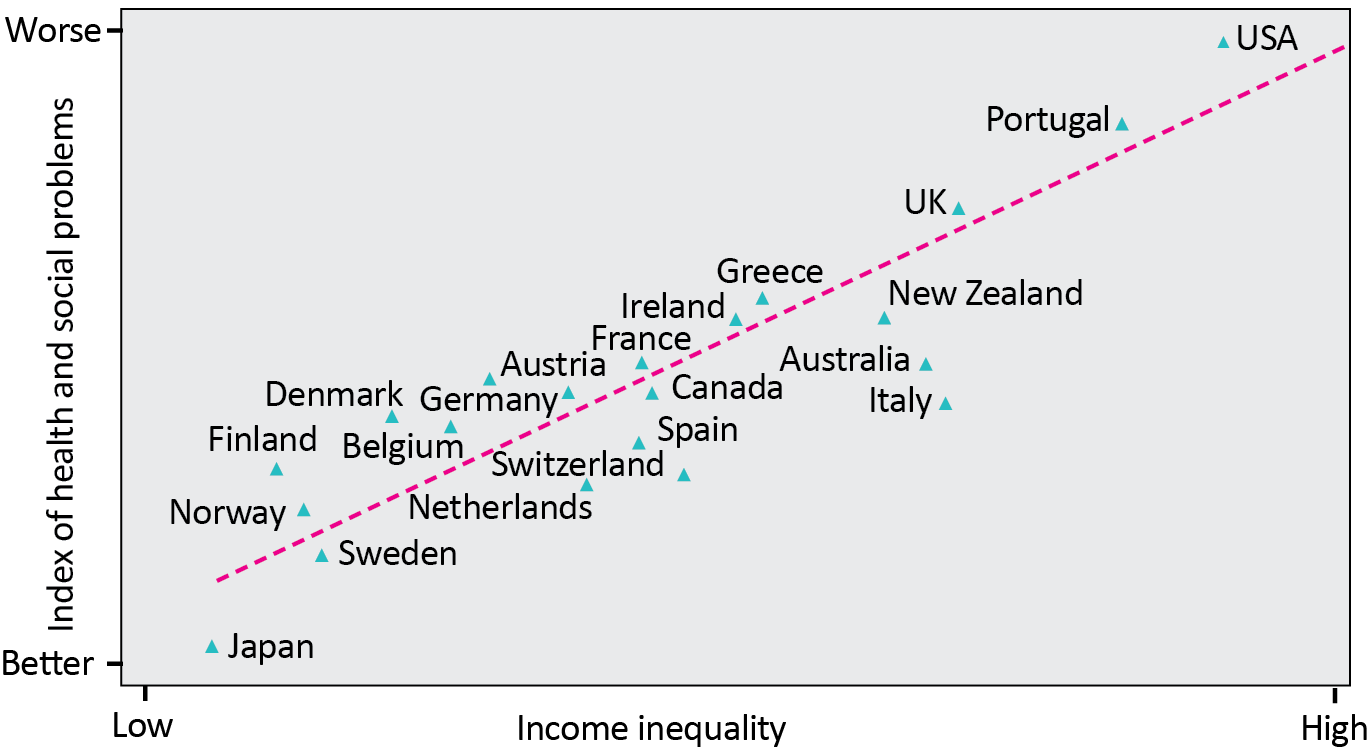
WILKINSON, R.; PICKETT, K. The Spirit Level: Why More Equal Societies Almost Always Do Better. Londres: Allen Lane, 2009.
- Decidam se as frases são tí () ou éf ().
- O gráfico um mostra como se distribui a renda nos Estados Unidos da América.
- O gráfico dois compara os níveis de saúde e de problemas sociais em diferentes países.
- O gráfico dois compara países que apresentam níveis semelhantes de desigualdade de renda.
- O gráfico um revela que há uma pequena diferença de renda entre o topo e a base da pirâmide.
- O gráfico um mostra que a riqueza está concentrada nas mãos de um pequeno grupo de milionários.
- De acordo com o gráfico dois, quais são os três países
- que revelam maior desigualdade de renda?
- que possuem o maior número de problemas sociais e de saúde?
- O que as respostas à questão 1b revelam sobre a relação entre desigualdade, saúde e problemas sociais?
- Na opinião de vocês, e de fórma desigual no Brasil? Comparem as suas respostas com as dos colegas.
- lazer
- comida
- moradia
- educação
- transporte público
- tratamento médico
- instalações esportivas
- oportunidades de emprego
e. Como vocês diriam em inglês os itens listados na questão 1d? Caso não saibam, consultem um dicionário ou peçam ajuda aos colegas ou ao professor.

2.

Eyes on grammar – EXAMPLE 1

Broken Connection Part 1: When There Is No Internet Access
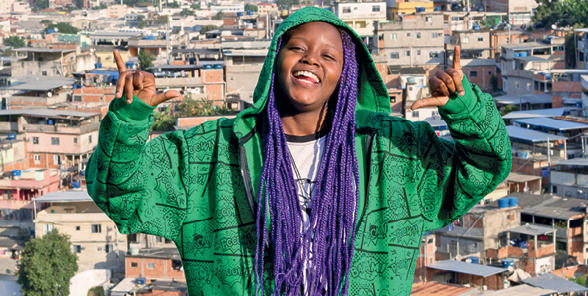
Martina [rapper MC Martina, who lives in Complexo do Alemão, Rio de Janeiro] is not alone. The disconnected reality in which she lives is very common in Brazil: 70 million people in the country do not have internet access. This lack of connectivity affects both rural and urban areas and is experienced mainly by the poorest population.
Cetic’s 2015 Household ICTs study conducted interviews about internet access with people from different classes. You can see their answers below:

DATA_LABE. Broken Connection Part 1: When There Is No Internet Access. RioOnWatch: community report on Rio. Rio de Janeiro, 22 janeiro 2018. Disponível em: https://oeds.link/Iu5VuO. Acesso em: 23 abril 2022.
Did you know?
• Há muitas maneiras de classificar economicamente a população. No Brasil, é usado um sistema que agrupa as pessoas em classes A, B, C, D e E. Esse sistema, desenvolvido pela Associação Brasileira de Empresas de Pesquisa, classifica os domicílios brasileiros de acordo com variáveis como grau de instrução do chefe de família, acesso a serviços públicos (água encanada, rua pavimentada) e número de eletrodomésticos (como máquina de lavar roupa, geladeira etcétera) na residência.

-
- Onde moram os brasileiros “desconectados”?
- Na opinião de vocês, quais são as desvantagens de ser “desconectado” da internet para artistas como a êmi sí Martina?
- Quais são as consequências de ser “desconectado” da internet para pessoas comuns?
rídin
Faça no caderno as questões de resposta escrita.
tesqui uon
bifór rídin

- ríd tchu lârn.

- ríd tchu lârn
ríd tchu lârn

Eyes on grammar – EXAMPLE 2
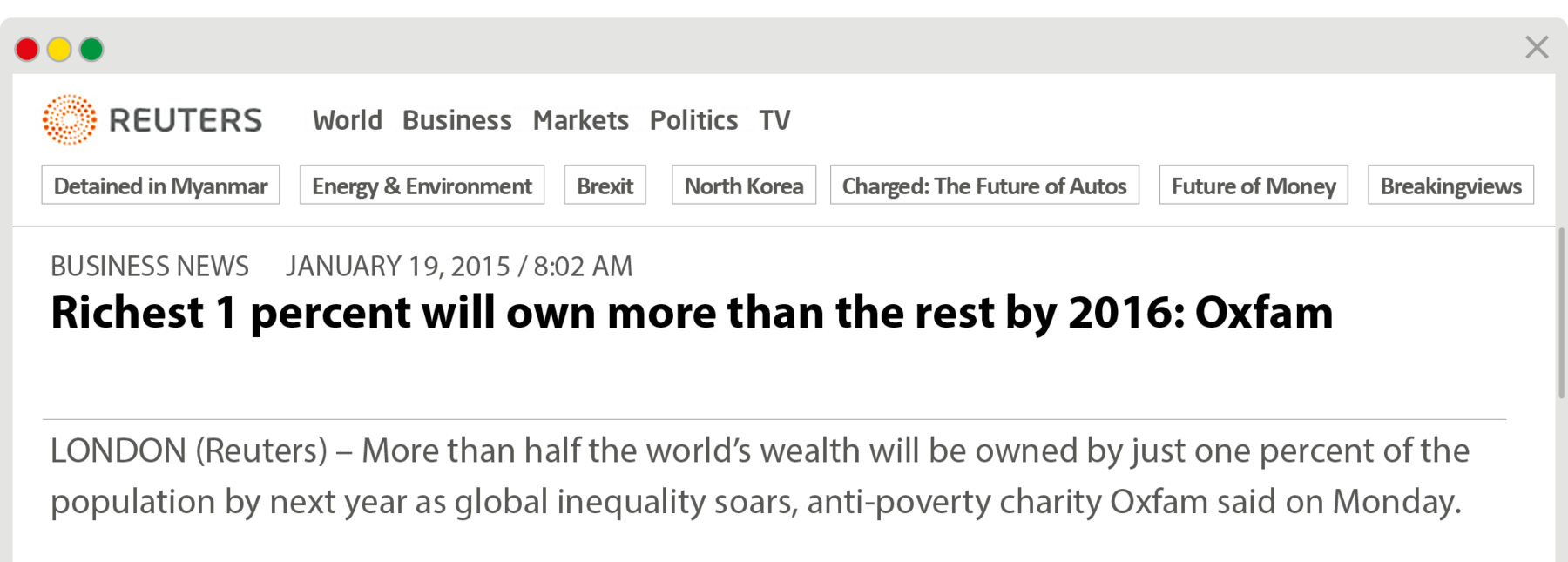
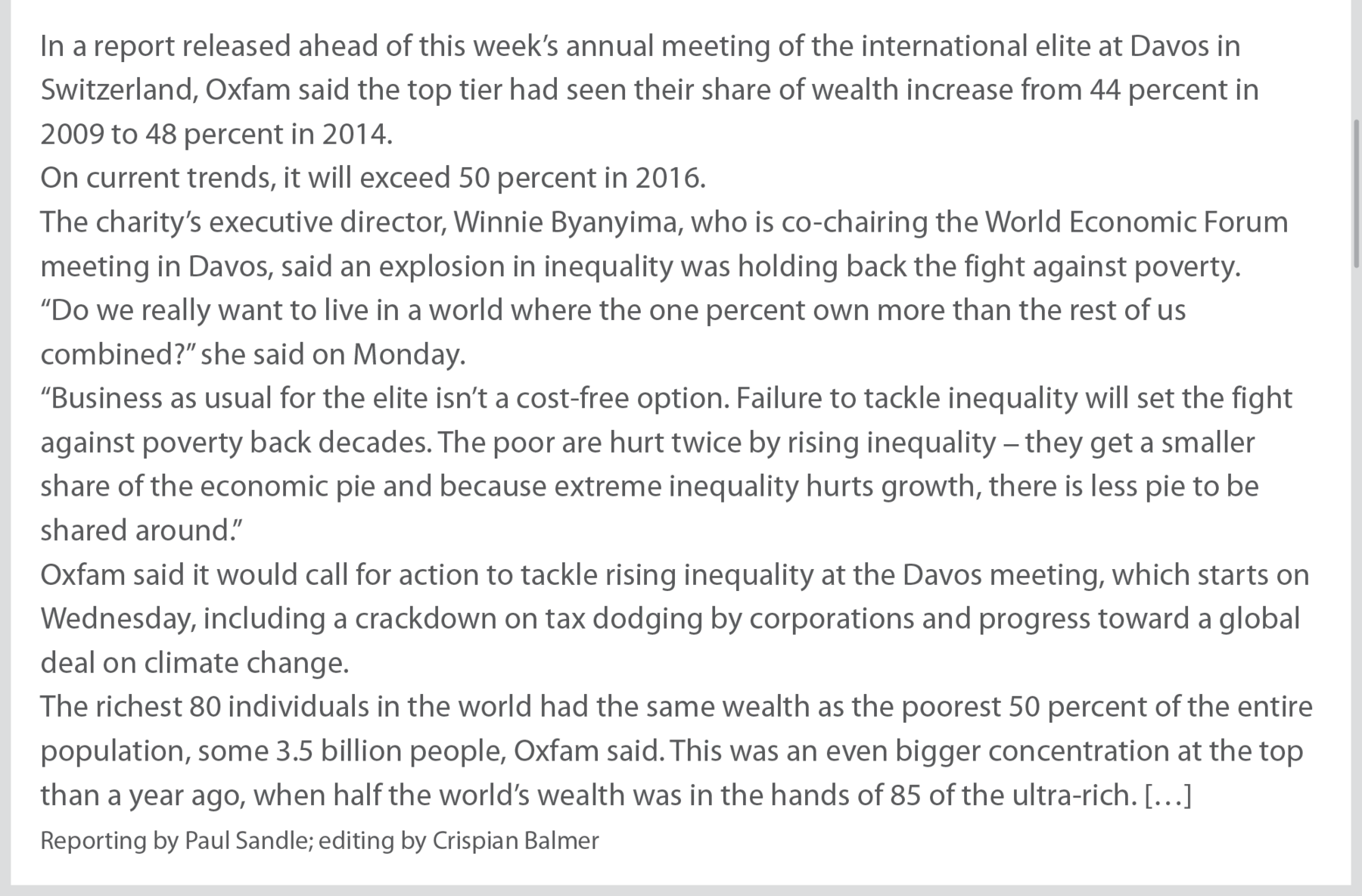
RICHEST 1 percent will own more than the rest by 2016: Oxfam. Reuters. Londres, 19 janeiro 2015. Disponível em: https://oeds.link/3aWGSn. Acesso em: 23 abril2022.
constrãquitchion minins

- .

Oxfam Paul Sandle World Economic Forum
tésqui tchu
bifór rídin

1.
stigma noun If you say that something has a stigma attached to it, you mean that people consider it to be unacceptable or a disgrace, and you think this is unfair. … the stigma attached to mental illness.
STIGMA. In: COLLINS Cobuild New Student’s Dictionary. segunda ediçãoGlasgow: HarperCollins Publishers, 2002.

2. .

- rréchitégui (cerquilha, sustenido)
d. ríd tchu lârn
ríd tchu lârn

Eyes on grammar – EXAMPLE 1
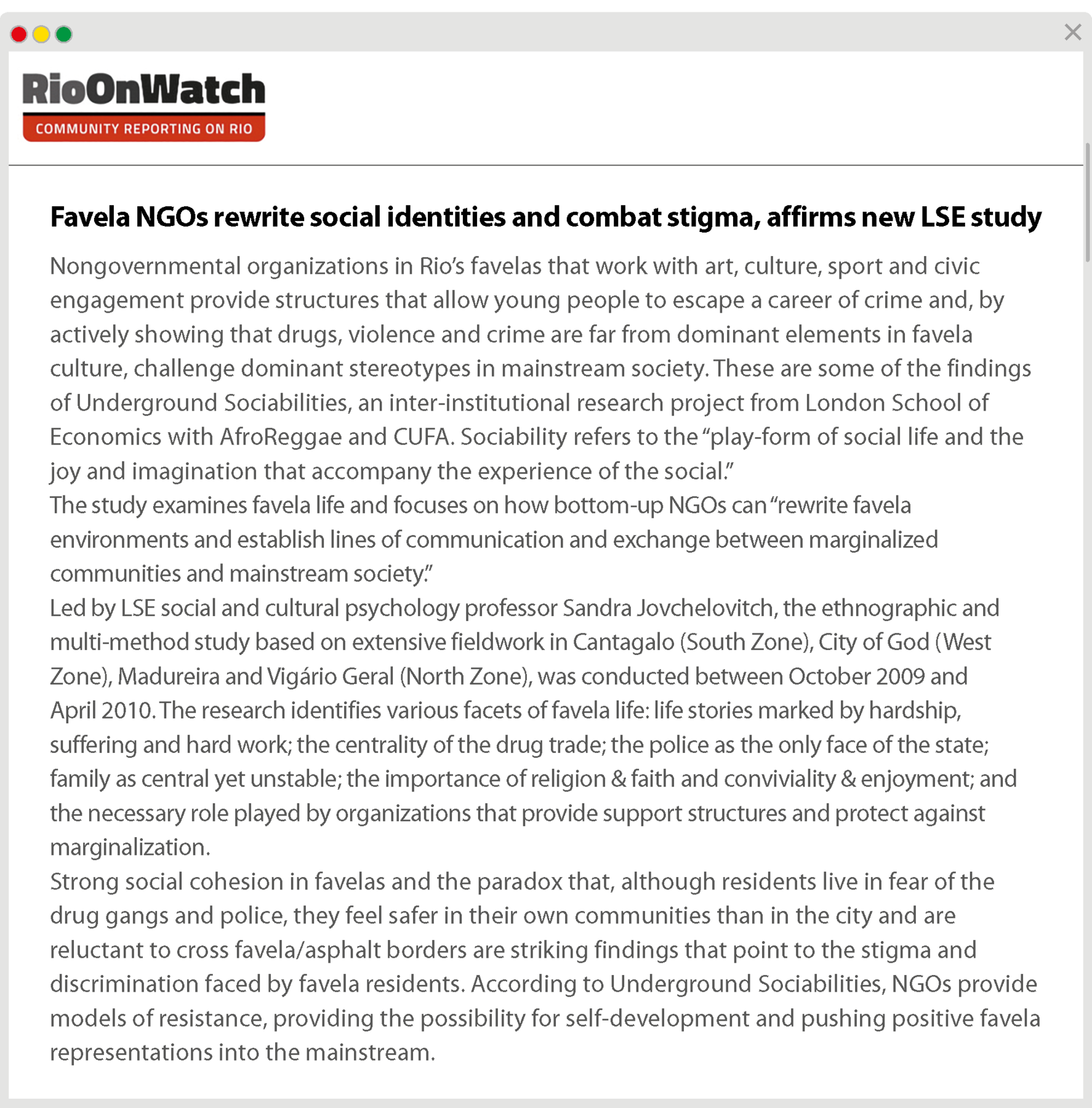
CLARKE, Felicity. Favela NGOs rewrite social identities and combat stigma, affirms new LSE study. RioOnWatch: Community report on Rio. Rio de Janeiro, 17 setembro2012. Disponível em: https://oeds.link/y55bGd. Acesso em: 23 abril 2022.
Did you know?
- A cúfa (Central Única das Favelas), fundada em 1999 no Rio de Janeiro, é uma organização que promove atividades nas áreas da educação, lazer, esportes, cultura e cidadania em favelas.
- O Grupo Cultural áfroréguei, fundado em 1993 no Rio de Janeiro, é uma organização que tem o objetivo de reduzir as desigualdades sociais e combater o preconceito, utilizando a arte e a cultura como instrumentos para a transformação social.
constrãquitchion minins




tésk thri
bifór rídin

ríd tchu lârn
- tésqui tchurídin

Eyes on grammar – EXAMPLES 1 AND 2
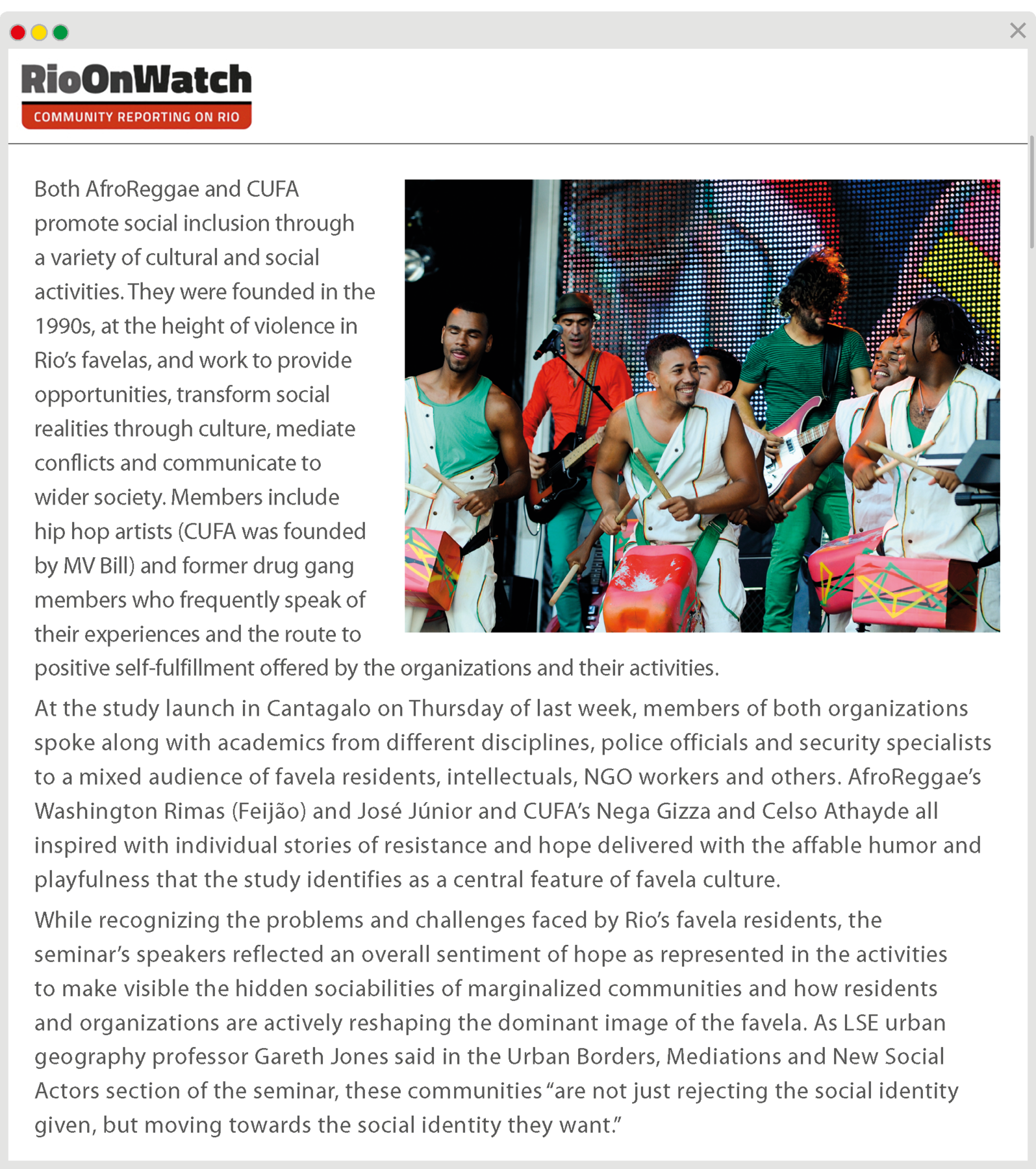
CLARKE, F. Favela NGOs rewrite social identities and combat stigma, affirms new LSE study. RioOnWatch: Community report on Rio. Rio de Janeiro, 17 setembro 2012. Disponível em: https://oeds.link/y55bGd. Acesso em: 23 abril 2022.
constrãquitchion minins



-
- “
- “
- “ )
- )

4.

- .
-
- .
- .
-
- .
- chórt.
-
-
- .
-
- .
- .
think a lítol mór

- .
- Em que países vocês acham que a desigualdade social é mais acentuada? Por quê?
- Como a discriminação está associada à desigualdade social?
- Quais ações vocês consideram válidas para combater a desigualdade social? Justifiquem sua resposta.
- Vocês conhecem organizações que promovam atividades sociais em sua região? Quais? Vocês consideram essas atividades importantes? Por quê?
lissenin
Faça no caderno as questões de resposta escrita.
bifór listenin



-
- mêinstrim
- pêintin
líssen tchu lârn

Clique no play e acompanhe a reprodução do Áudio.
Clique no play e acompanhe a reprodução do Áudio.
Clique no play e acompanhe a reprodução do Áudio.

Eyes on grammar – EXAMPLE 1
Interview – Parts um, dois and três
Title: LSE Research: Underground Sociabilities – Identity and Culture in Rio’s Favelas
Date: August 1st, 2012
Source: London School of Economics and Political Science (LSE)
CLARKE, F. Favela NGOs rewrite social identities and combat stigma, affirms new LSE study. RioOnWatch: Community report on Rio. Rio de Janeiro, 17 setembro 2012. Disponível em: https://oeds.link/y55bGd. Acesso em: 23 abril 2022.
Did you know?
• sôuchiol quépitol se refere aos valores e interesses compartilhados em sociedade e que facilitam a cooperação dentro de um grupo ou entre grupos.
constrãquitchion minins


-
-
- Trâst
- cûltiur
-


think a lítol mór

-
- O texto discute respostas positivas à desigualdade idealizadas dentro das favelas, mas o que as pessoas que vivem fóra das favelas podem fazer?
- Quais problemas podem surgir quando pessoas de fóra das favelas propõem intervenções nessas comunidades?
lenguagi in équitchon
Faça no caderno as questões de resposta escrita.

- página
-
- espaço para resposta ().
- espaço para resposta (). ().
-

- rídin
- “ (página 127)
- “ 127)
- “és (página129)

3. bôudi
Versão adaptada acessível
Atividade 3.
Read the excerpts of the feature article and the interview taken from RioOnWatch and match the connectors "although", "both", "and", "while", "not just" and "but" to what they express.
- .
- cóntrést.
- álthou (página 127)
- “ áfrorégueiênd.” (página 129)
- “huáiol (página 129)
- , bãt (página 129)
e. “bãt (página 132)

4.
and (três vezes) but (três vezes) not just
- “ (um) espaço para resposta (dois) espaço para resposta
b. “, (um) espaço para resposta (dois) espaço para resposta .
SEIDMAN, Karen. Montreal is first venue in Northern Hemisphere to host World Social Forum. Montreal Gazette. Montreal, 10 agosto 2016.
- “ – (um) espaço para resposta rélth, (dois) espaço para resposta
d. , espaço para resposta
JARVIE, Jenny. Q&A: U.N.’s poverty and human rights special rapporteur finds U.S. policies reward wealthy, punish poor. Los Angeles Times. Los Angeles, 2 junho 2018.
ráitin
Faça no caderno as questões de resposta escrita.
rit de rroudi
With your classmates, you are going to write a feature article about the World Social Forum, an event set up to fight inequality. Provide information about the World Social Forum, including its history and background, and try to add some human interest (personal stories). Remember you have already seen an example of a feature article in Tasks 2 and 3 (Reading).
1.
For the oral production
What is the discursive genre? Feature article.
What is the theme? Action on social inequality.
What is the objective? To provide information and human interest on the World Social Forum.
At whom is it aimed? The school community.
How and where is it going to be presented? It will be published in the school newspaper or displayed on a school board.
Who is going to participate? The whole class, organized into five groups, each one of them responsible for one part of the feature article.
túlbóks

-
- Busquem informações sobre o Fórum Social Mundial. Essas informações devem incluir detalhes sobre quem são seus participantes, quando foi fundado, quais são seus objetivos e onde seus encontros são realizados. Pesquisem e procurem informações de diferentes fontes.
- Selecionem informações fornecidas por organizações ou indivíduos que tenham participado do Fórum Social Mundial e as organizem em frases usando tanto o dairéct spítch(reproduzindo os discursos entre aspas) como o indairéct spítch(parafraseando os discursos).
- Definam de que parte da reportagem cada grupo vai ficar encarregado. Levem os seguintes itens em consideração:
- Grupo 1: Escrevam uma manchete que mencione os objetivos ou as realizações do Fórum Social Mundial. Escolham também uma imagem que o represente.
- Grupo 2: No primeiro parágrafo, organizem informações sobre o que é o Fórum Social Mundial e quais são suas atividades.
- Grupo 3: No segundo parágrafo, forneçam informações sobre quando e por que o Fórum Social Mundial foi criado. Incluam citações de pessoas ou organizações envolvidas em sua criação.
- Grupo 4: No terceiro parágrafo, descrevam com mais detalhes o que acontece no Fórum Social Mundial, onde ele já ocorreu e quando e onde será realizado o próximo. Usem citações de pessoas ou organizações envolvidas nesse evento a fim de acrescentar algum interesse humano.
- Grupo 5: No quarto parágrafo, concluam o texto apresentando uma síntese das informações.
- Quando todas as partes do texto estiverem terminadas, finalizem a reportagem com os nomes de seus responsáveis (bailáin).
istép béqui

-
- uma manchete com algo interessante sobre o Fórum Social Mundial;
- informações sobre quando e onde o Fórum Social Mundial foi fundado;
- citações (dairéct spítch ou indairéct spítch) de indivíduos e de organizações envolvidas no Fórum Social Mundial;
- quatro parágrafos com as informações próprias de cada um;
- coesão entre os parágrafos;
- vocabulário apropriado e adequação da linguagem;
- os nomes dos autores no final da reportagem (bailáin).

2.
piti istopi
Faça no caderno as questões de resposta escrita.

- .
thinkirôver
Faça no caderno as questões de resposta escrita.

-
- Achei esta unidade interessante?
I.

II.

III.

b. Refleti sobre desigualdade?
I.

II.

III.

c. Consegui ler as notícias e reportagens?
I.

II.

III.

d. Consegui escrever uma reportagem?
I.

II.

III.

e. A unidade me deu ideias para combater a desigualdade?
I.

II.

III.

áison grémer
Read the examples extracted from this unit’s texts, as well as the highlighted words and expressions. Pay close attention to the notes that follow them.
egzâmpol uan
“This lack of connectivity affects both rural and urban areas .”
(página 123)
although residents live in fear of the drug gangs and police, they feel safer in their own communities than in the city
127)
“While recognizing the problems and challenges faced by Rio’s favela residents, the seminar’s speakers reflected an overall sentiment of hope
these communities ‘are not just rejecting the social identity given, but moving towards the social identity they want’.”
(página129)
“They are not only places of poverty and exclusion, and not only places of violence and drug trade. They play in the favelas, but they also play in the mainstream. They are not people who come from the outside with a proposal to intervene in the favelas, but they were produced by the favelas and work in the favelas.”
(página 132; Interview – Parts um and três)
|
Addition or listening / Adição ou enumeração |
Contrast / Contrast |
|---|---|
|
both… and |
although |
- Alguns conectores podem ter sentidos diferentes em outros enunciados.
- huáiol e uáielst possuem o mesmo sentido quando usados como conectores; huáiol é mais usado do que uáielst.
egzâmpol tchu
“More than half the world’s wealth will be owned by just one percent of the population by next year as global inequality soars, anti-poverty charity Oxfam said on Monday.
In a report released ahead of this week’s annual meeting of the international elite at Davos in Switzerland, Oxfam said the top tier had seen their share of wealth increase from 44 percent in 2009 to 48 percent in 2014.
‘Do we really want to live in a world where the one percent own more than the rest of us combined?’ she said on Monday.”
124-125)
“As LSE urban geography professor Gareth Jones said in the Urban Borders, Mediations and New Social Actors section of the seminar, these communities ‘are not just rejecting the social identity given, but moving towards the social identity they want’.”
129)
|
Direct speech / Discurso direto |
Indirect speech / Discurso indireto |
|---|---|
|
Direct speech presents the words that the speaker used. To report the actual words, quote marks (“ ”) and reporting verbs (“said”, “say”) are used. |
Indirect speech reports something that was said, but does not use the exact words of the speaker. Reporting verbs (“said”, “say”) are used. |
• Existem dois tipos de aspas: simples (‘ ’) e duplas (“ ”). Para indicar uma citação (discurso direto), usamos aspas duplas. Para indicar uma citação dentro de outra, usamos aspas simples.